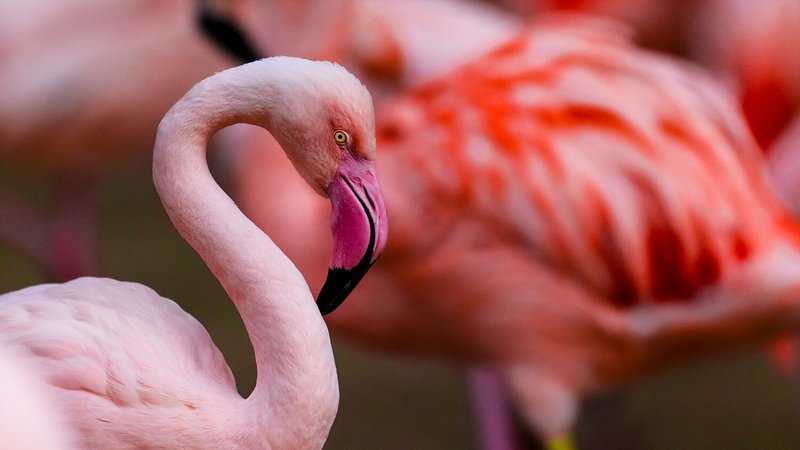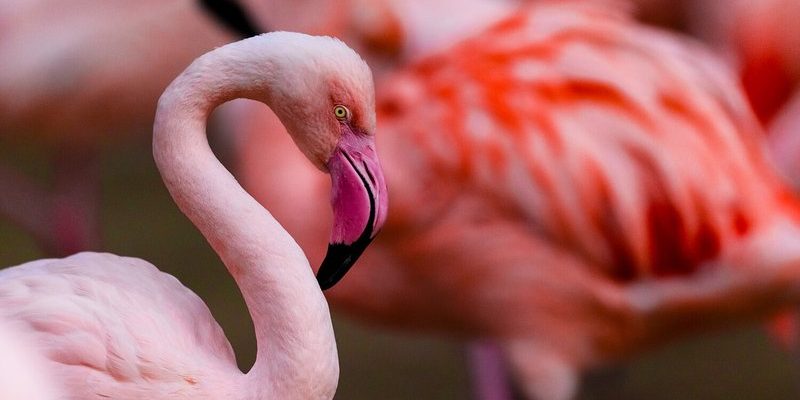
From the shallow waters of lagoons to the expansive salt flats, flamingos have made their home in diverse ecosystems. They prefer warm weather and often gather in large flocks, creating stunning visuals that are both breathtaking and humbling. This guide will dive into the hotspots where you can observe these fascinating birds, focusing on their global habitats and ranges.
1. The Caribbean: An Oasis for Flamingos
The Caribbean islands are some of the best places to see flamingos in their natural habitats. Areas like the Bahamas and Cuba boast stunning wetland environments that attract these beautiful birds. In Cuba, the Zapata Swamp is a prime location where thousands of flamingos can be seen foraging for food in the shallow waters.
The shallow lagoons here provide an excellent breeding ground, allowing flamingos to thrive. You might spot them standing on one leg, a classic pose that helps conserve energy. Isn’t it fascinating how such a simple action serves a purpose? Flamingos feed primarily on algae and small crustaceans, which give them that signature pink hue. So, if you’re planning a trip to the Caribbean, don’t forget to pack your binoculars!
2. The Americas: A Flamingo Treasure Trove
Heading further inland, you’ll find flamingos in various regions across North and South America. The Everglades National Park in Florida is a fantastic spot where you can catch sight of American flamingos. These wetlands are teeming with wildlife, and the sight of flamingos wading through the waters is a highlight.
In South America, the Andean flamingo can be found at high altitudes, specifically in the salt flats of Bolivia. Imagine standing over 12,000 feet above sea level, surrounded by stunning landscapes, with these striking pink birds dotting the scenery. The contrasting colors create a spectacular view! These regions not only provide food but also vital nesting grounds to help sustain the flamingo population.
3. Africa: The Epicenter of Flamingo Diversity
Africa is often regarded as the heart of flamingo diversity. Places like Lake Nakuru in Kenya are famous for their massive flocks of lesser flamingos. Here, the shallow waters are abundant with the blue-green algae that flamingos love to feast on. You might encounter thousands of flamingos at a time, transforming the lake into a vibrant pink oasis.
Another remarkable location is the Salinas de Janubio in Lanzarote, Canary Islands, where both greater and lesser flamingos can be seen. The salt flats here provide a unique environment, showcasing the adaptability of flamingos in varying habitats. There’s something awe-inspiring about witnessing these birds flocking together, painting the landscape with their vivid color—it’s a sight you won’t easily forget.
4. Europe: Unique Flamingo Sightings
Europe is not the first place that comes to mind when you think of flamingos, but there are hidden gems. The Camargue region in France is renowned for its wild flamingo population, and the best time to visit is during the spring when they gather to breed.
This unique wetland area offers a variety of habitats, from salt marshes to lagoons, creating perfect conditions for flamingos. Visitors can enjoy scenic walks or boat tours to get closer to these majestic birds. Let me explain: flamingos aren’t just a spectacle; they also play a role in their ecosystem, helping to maintain a healthy environment for other wildlife.
5. The Middle East: Desert Dwellers
Believe it or not, flamingos can adapt to some seemingly inhospitable places, like the salty lakes in the Middle East. The Sabkhat al-Jabbul in Syria is an excellent location where flamingos can often be spotted. These salt flats provide a crucial stopover for migrating flamingos, especially during the winter months.
In the United Arab Emirates, you can find these birds at Ras Al Khor Wildlife Sanctuary, a unique blend of urban and natural environments. Here, flamingos draw contrasts against the modern skyline while still basking in their preferred marshland habitat. It’s a beautiful reminder that nature can thrive even in bustling cities.
6. Australia: Flamingos Down Under
You might be surprised to learn that flamingos can be found in Australia too! The Lake Cowan and Lake Macdonnell regions are popular spots where the lesser flamingo thrives. These saline lakes are vital for flamingos, providing ample food sources and nesting opportunities.
Here’s the thing: spotting flamingos in Australia might require a bit more effort, as they’re not as common as in other parts of the world. However, the experience of seeing these stunning birds in their unique habitat is well worth the trip. The contrast between the pink of the flamingos and the rich blue sky creates an unforgettable experience, making it a special destination for bird watchers.
7. Conservation and Flamingo Watching
As you explore these habitats, it’s vital to remember the importance of conservation. Many flamingo populations face threats from habitat loss, pollution, and climate change. Participating in responsible birdwatching helps protect these species and their environments.
It’s best to observe from a distance and avoid disturbing their natural behaviors. Many parks and reserves have guidelines in place to ensure the safety of both birds and visitors. By respecting these rules, you can contribute to the preservation of flamingos for future generations to admire.
8. Tips for Spotting Flamingos
Planning to go flamingo watching? Here are some handy tips to enhance your experience:
- Timing: Early morning or late afternoon are typically the best times to see flamingos feeding.
- Bring Binoculars: A good pair will help you see them up close without getting too close.
- Patience is Key: Flamingos may not always be active, so be prepared to wait quietly.
- Research Local Spots: Look up local resources or tour companies to find the best viewing locations.
Flamingos are beautiful birds that add vibrancy to our world. By finding them in their habitats and respecting their spaces, you’ll not only have a fantastic experience but also contribute to the conservation of these stunning creatures.
Whether you’re standing in the shallow waters of a Caribbean lagoon or observing them against the backdrop of a European city, the sight of flamingos is always a captivating moment. As you embark on your journey to spot flamingos, remember: each encounter is a chance to appreciate the beauty of wildlife and the importance of protecting our natural spaces. Happy birdwatching!

